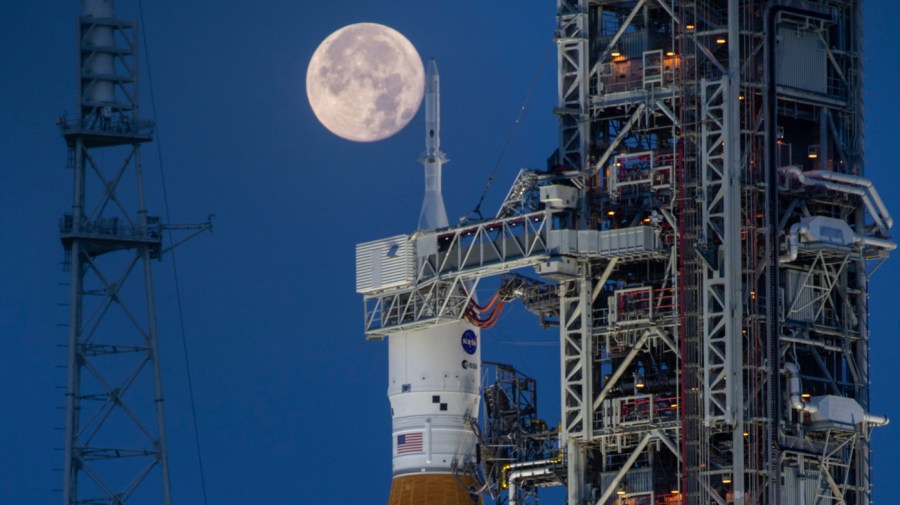The United States and Japan have entered into an agreement that will change the course of space exploration.
According to the White House, in exchange for Japan providing a pressurized vehicle that will greatly expand astronauts’ ability to explore the lunar surface, NASA will include two Japanese astronauts in future Artemis missions to the moon. They will be the first non-Americans to walk on the moon should their Artemis mission happen before a planned Chinese flight.
NASA said the Japanese contribution to Artemis “will enable astronauts to travel farther and conduct science in geographically diverse areas by serving as a mobile habitat and laboratory for the astronauts to live and work for extended periods of time.” NASA also noted it can “accommodate two astronauts for up to 30 days as they traverse the area near the lunar South Pole.” The space agency aims to “use the pressurized rover on Artemis VII and subsequent missions over an approximate 10-year lifespan.”
American-Japanese relations have certainly had their ups and downs. In 1853, Commodore Mathew Perry led a squadron of United States Navy ships into Japanese waters and, with a combination of threats and diplomacy, ended Japan’s over two-century period of isolation and brought that country into the world. Eventually, after the Russo-Japanese War of 1904-1905, Japan became a world power,
Later in the 20th century, the United States and its allies engaged in a death struggle with Japan across the Pacific that began with the sneak attack on Pearl Harbor and ended with the atomic bombing of Hiroshima and Nagasaki. Japan spent most of the rest of the 20th century as an American ally in the Cold War but a rival in commerce and technology development.
In the 21st century, a new cold war has developed with China as the main enemy. Just as with the first version, part of that struggle is taking place in space. In starting the Artemis program, the United States has added quite a few features that are an improvement over the Apollo program to land a man on the moon, not the least of which is making the return to the lunar surface an international effort.
One of those features is the Artemis Accords, an agreement between nations about rules by which space exploration will be conducted. Switzerland and Sweden are the latest signatories of the accords which number 38 and growing.
NASA has also proven that Artemis is an international effort by including a Canadian astronaut, Jeremy Hansen, as part of the Artemis II mission to circle the moon, scheduled for late 2025. The inclusion of two Japanese astronauts in subsequent Artemis missions is the next logical step in that strategy.
How do the two countries benefit from this lunar partnership?
Japan gets direct access to the technology that will be developed as a result of Artemis, which will have both space and earthly applications. Just as importantly, the country will have bragging rights for having its astronauts walk on the moon.
NASA gets what is in effect a lunar RV, a pressurized vehicle that can take two astronauts on long distances across the moon’s surface, visiting sites at a considerable distance from the landing site. Astronauts can work and live inside the vehicle in shirt sleeves and go outside in space suits to take geological samples and leave experiments. The deal is separate from the three commercial lunar rovers that NASA recently announced.
Large-scale space exploration projects, including the original Apollo program to land men on the moon and the International Space Station, have always had a soft political power component. The United States undertook the Apollo program to impress the world with its technological prowess, an important matter during the Cold War with the Soviet Union.
Artemis has a similar soft political power aspect but with a major difference from Apollo. While the world was expected over 50 years ago to watch the original moon landings with awe (and fear on the part of the Soviets) the world is now being invited to join in on the next moon landings.
Now, the rest of the world, especially those countries that have signed the Artemis Accords, must be wondering how they can get their astronauts on Artemis missions to the moon. NASA is open for business and we can expect more announcements with more nations in due course.
Mark R. Whittington, who writes frequently about space policy, has published a political study of space exploration entitled “Why is It So Hard to Go Back to the Moon?” as well as “The Moon, Mars and Beyond,” and, most recently, “Why is America Going Back to the Moon?” He blogs at Curmudgeons Corner.
